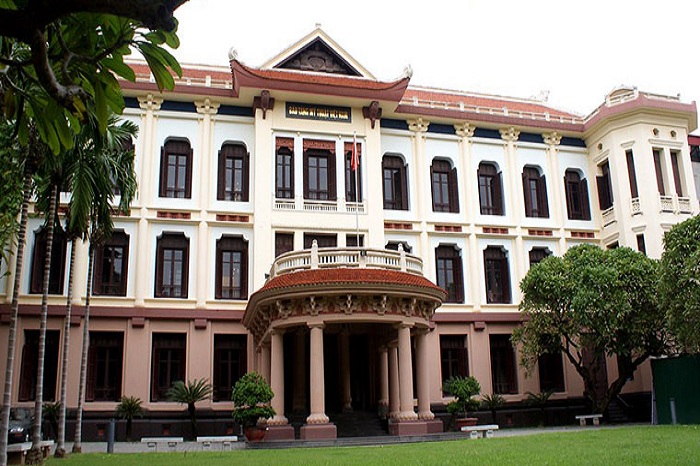
Vietnam National Fine Arts Museum
- on Jul 9, 2020 By: Ngoc Nguyen
Take advantage of your stay in Hanoi, the capital of Vietnam, to discover the Vietnam National Fine Arts Museum, which offers you a panoramic view of the evolution and characteristics of Vietnamese art on more than 4,700 m2 and three floors. A must-visit for art lovers and the curious!
History of the Hanoi Museum of Fine Arts
Located a few hundred metres from the Temple of Literature in Dong Da district, the Vietnam National Fine Arts Museum surpasses that of Ho Chi Minh City and is one of the most beautiful museums in Vietnam. The Museum is located in a former Catholic college for young girls, built in 1937 in the time of French Indochina, this building superbly mixes Eastern and French architectural styles. A new architectural concept that we owe to the famous French architect and urban planner Ernest Hébrard. This visionary is also the author of the former Louis Finot Museum, named after its first director, of the French School of the Far East, which has become the Vietnam National Museum of History. Following the departure of the French in 1954, the old college was refurbished and officially became the Vietnam National Fine Arts Museum on June 6, 1966, when it was inaugurated.
What to see at the Vietnam National Fine Arts Museum?
The Vietnam National Fine Arts Museum offers a panoramic view of the evolution and characteristics of Vietnamese art over more than 4,700 m2 and three floors. The museum is divided into 5 different sections: prehistoric art, Vietnamese art from the 11th to the 19th century, Vietnamese art in the 20th century, popular art collections and Vietnamese ceramic art.
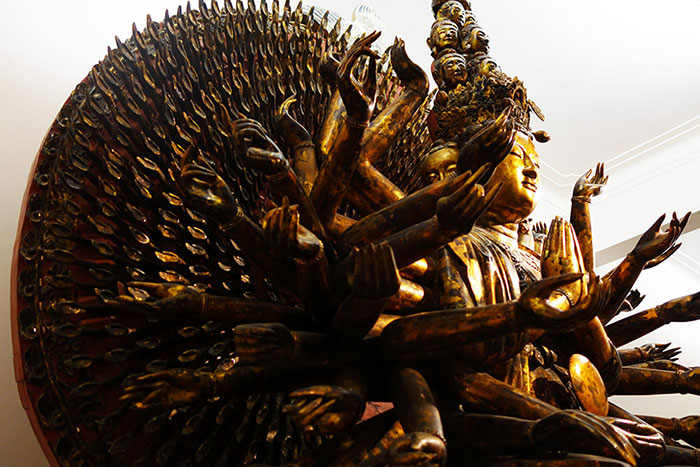
The ground floor of the museum is dedicated to the arts of prehistoric times, antiquity and the Middle Ages. You can admire objects from the Stone Age and the Iron Age, magnificent wood and stone carvings. The bronze jar, which is known as Dao Tinh (Yen Bai province), dated 2,500 years ago, is considered to be a national relic, and a lacquered wooden work dating from the 18th century representing the goddess of Mercy, a goddess with "a thousand eyes and a thousand arms".
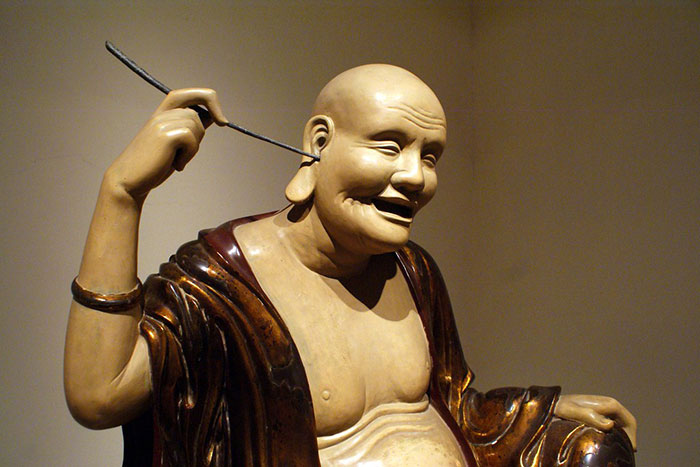
Also to be admired is a superb collection of ancient Buddhas, wooden statues, painted and covered with bronze, from the 12th and 13th centuries from the Ly Dynasty and the 13th and 14th centuries from the Tran Dynasty. Fearing bombing by the American air force during the Vietnam War, most of these priceless works were hidden in the countryside before being put back in the museum at the end of the conflict.
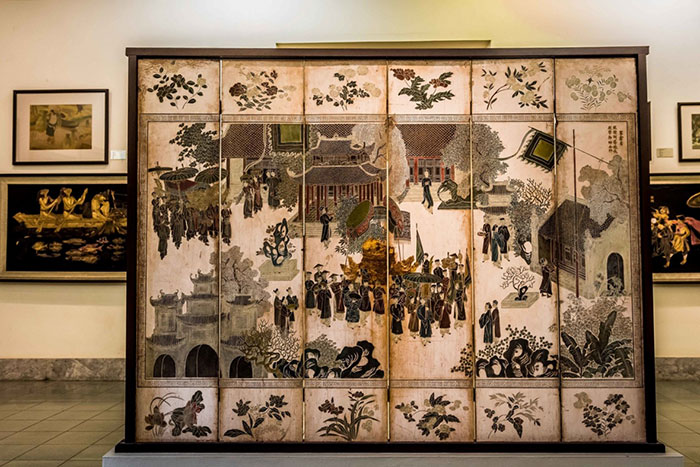
The first floor is devoted to the arts in the first half of the 20th century, that of the Doi Moi period (Renovation) from the mid-1980s and also more recent works of the 2000s. Vietnamese arts from 1925 to 1945 ushered in a new era in the history of modern Vietnamese fine art with the creation of the College of Fine Arts in Indochina. This paved the way for a more modern Vietnamese style of modern art, freeing itself from the influences of Western and Chinese painting. On this floor, you can admire superb lacquers and magnificent oil paintings by major Vietnamese artists who celebrate peasant life and Hanoi street scenes. You will also be able to appreciate the work of artists who have abandoned the romantic style to produce works full of optimistic battles, thus forming revolutionary Vietnamese art.
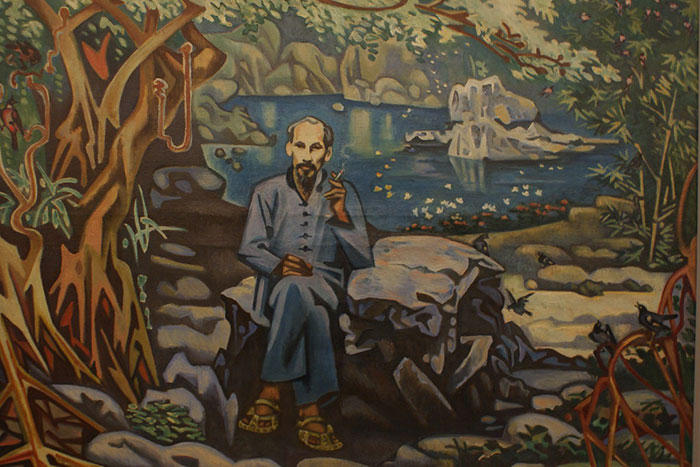
On the second floor of the museum, you can appreciate the splendid paintings on silk. An art which for a long time was limited to realistic portraits with simple lines then which in the 1930s experienced a new boom with the emergence of artists who knew how to combine western artistic principles and eastern aesthetics to create new original techniques. One of the precursors of this revival of Vietnamese silk painting is Nguyen Phan Chanh (1892-1984), inventor of a silk washing technique that gives a modern and original look to this traditional painting style. On this floor, you can also admire beautiful watercolours and sculptures of revolutionary socialist inspirations.
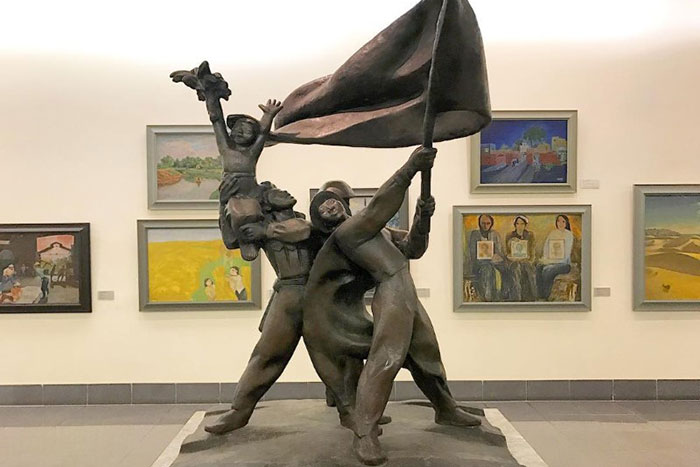
In the basement of the museum, you will find an incredible collection of ceramics from the 10th to the 20th century which presents the main characteristics of ceramics through different periods of history. We can observe ceramics typical of the Ly dynasty (11th - 12th centuries): celadon enamelled ceramics, ivory yellow enamelled ceramics with ornamental patterns in relief, ceramics of the Ly dynasty comprising white enamels, dark brown and emerald enamels. What a joy also to be able to contemplate the cobalt blue glazed ceramic dating from the end of the 14th century!
The famous Vietnamese painter Bui Xuan Phai
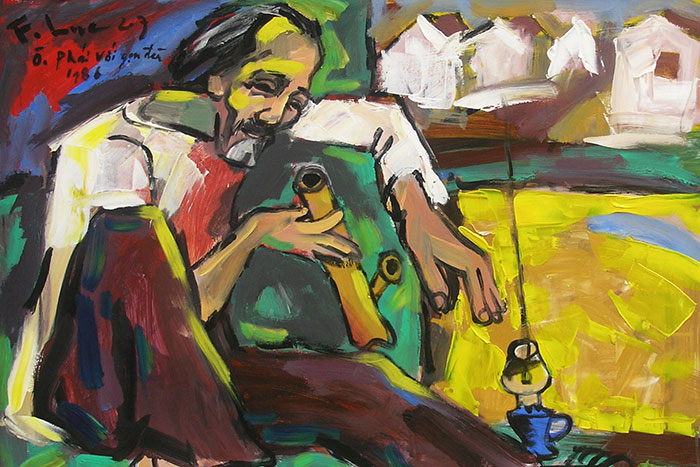
At the Museum of Fine Arts in Hanoi, you will have the opportunity to admire on the second floor works by the Vietnamese artist Bui Xuan Phai that many consider to be a painter who was in Hanoi could do as what Toulouse-Lautrec was doing in 19th century Paris. He is the best known of the modern Vietnamese painters and is famous for the paintings of the old quarter of Hanoi and for having supported a movement for political and cultural freedom in 1957. A commitment which cost him his teaching post at the school of fine arts but which earned him the esteem of the people.
Related articles:
 Español
Español Français
Français









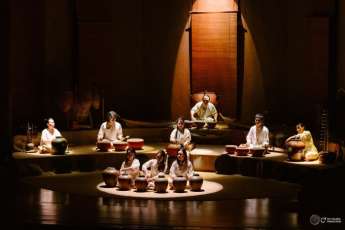











TraZefUK
on Nov 28, 2025HerbertPhomaMS
on Oct 19, 2025Lilyan Cuttler
on Oct 15, 2025Avenue17XC
on Sep 14, 2025Avenue18JL
on Jul 21, 2025